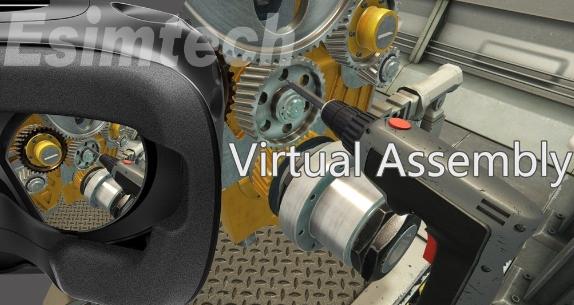Device Virtual Assembly (DVA) is a rapidly emerging technology that is transforming the oil and gas industry. DVA is a computer-aided design (CAD) software that allows engineers to create and assemble virtual models of complex devices, such as drilling rigs, refineries, and pipelines. DVA offers a number of advantages over traditional design methods, including:
- Reduced design time and cost: DVA can significantly reduce the time and cost of designing complex devices. Virtual models can be assembled and tested much faster than physical prototypes, and DVA can help to identify and correct design errors early in the design process.
- Improved design quality: DVA can help to improve the quality of device designs by allowing engineers to visualize and test their designs in a virtual environment. This can help to identify potential problems and make necessary design changes before the device is built.

- Enhanced collaboration: DVA can facilitate collaboration between engineers and other stakeholders, such as project managers and operators. Virtual models can be shared and reviewed easily, and DVA can be used to conduct virtual design reviews and walk-throughs.
A number of oil and gas companies are now using DVA to design and build their facilities and equipment. For example, Chevron is using DVA to design its new offshore drilling rigs. DVA has helped Chevron to reduce the design time for its rigs by 50%. Similarly, BP is using DVA to design its new refineries. DVA has helped BP to improve the quality of its refinery designs and to reduce the cost of construction.
DVA is also being used to improve the maintenance and repair of oil and gas assets. For example, ExxonMobil is using DVA to create virtual models of its pipelines. This allows ExxonMobil to identify potential problems with its pipelines before they cause a failure. Similarly, Shell is using DVA to create virtual models of its offshore platforms. This allows Shell to plan and execute maintenance and repair operations more efficiently.
Overall, DVA is having a significant impact on the oil and gas industry. By reducing design time and cost, improving design quality, and enhancing collaboration, DVA is helping companies to design and build better facilities and equipment, and to operate and maintain their assets more efficiently and safely.
As DVA technology continues to develop and become more affordable, it is likely to play an even greater role in the oil and gas industry in the future. DVA has the potential to revolutionize the way that oil and gas companies design, build, and operate their assets.
